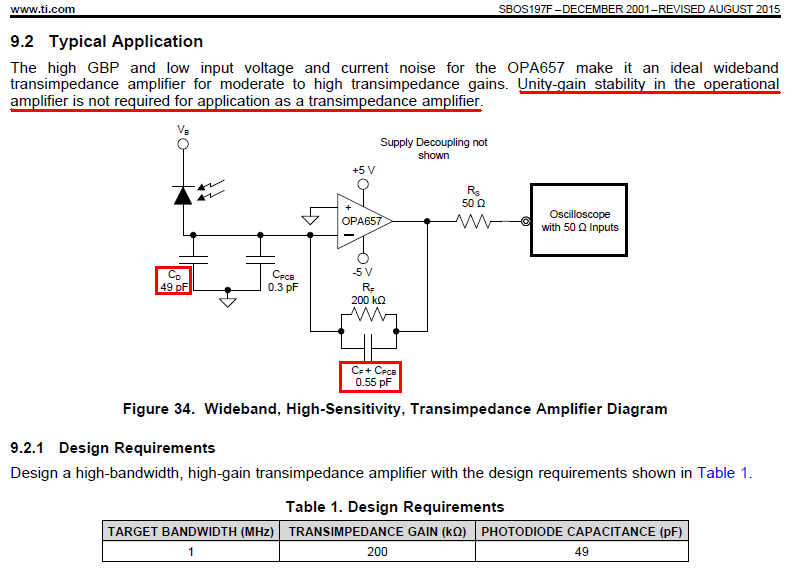I have constructed transimpedance amplifier in the hopes to achieve both high-gain (5kΩ) and high-bandwidth (50MHz) performance using the FGA21 photodiode, the OPA657 Op-Amp and the 2N2369 Transistor. Key specifications include:
- Gain Bandwidth Product: GBW = 1.6GHz
- Photodiode Capacitance: Cd > 100pF
To extend the amplifier bandwidth I have implemented the bootstrap architecture, as illustrated in the figure below:

Here the photodiode is replaced by the equivalent circuit. This circuit has been constructed and to confirm stable operation a voltage noise measurement was recorded:
This shows a bright noise feature at 50MHz which is problematic as it is near the frequency band of interest for our application. To explore this behaviour further the detector output was measured on an oscilliscope and a clean +120mV DC output was observed, which is consistent with the base current provided by the transistor. When the photodiode is illuminated the output starts decreasing as expected from an inverting amplifier, however, as it approaches 0V the output begins oscillating dramatically (+-500mV amplitude) at the resonance frequency of 50MHz. Suggesting this resonance feature is being excited.
My only explanations are the following:
- The 2N2369 transistor is not fast enough to ensure stability at 50MHz
- And/or when the photodiode is illuminated the photodiode current counteracts the base current and switches the transistor off when it reaches an appropriate level, reducing the gain at 50MHz even further and causing dramatic oscillations.
However, I am not convinced about either of these answers as the SPICE model of this circuit does not predict resonances at these frequencies. Any ideas on the cause of/ solution to these problems would be greatly appreciated.



